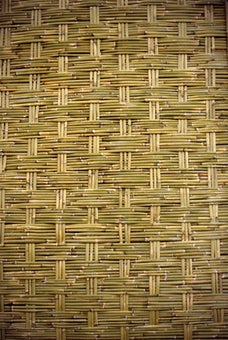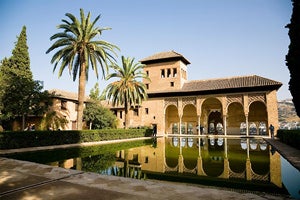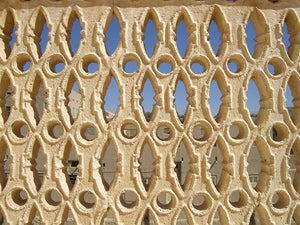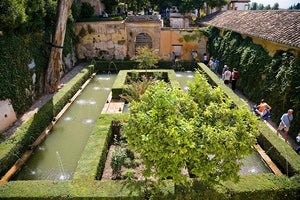Online teaching and architectural solutions to climate problems in the Islamic world
Colette Apelian
Fine Art faculty, Berkeley City College
As the Islamic art historian in the Art Department of Berkeley City College (BCC), I explain how North African to South Asian art and architecture are relevant to design students less familiar with pre-modern and non-western material cultures. Course logistics add to the challenge. Art 48VR, Introduction to Islamic Art History, is one of the few, if not the only online survey of Islamic art presented to a community college audience. To better address student needs, I organize the class thematically rather than chronologically, and focus upon a carefully chosen combination of fine and utilitarian objects and buildings. Presentations must be compressed so that BCC’s course management system, Moodle, properly stores and displays them. An example of how I use Artstor in Art 48VR can be viewed in one image group for the lecture “Architectural Solutions to Climate Problems in the Islamic World.”
- Reed building screen, detail, Morocco. Image: 1982. Image and original data provided by Walter B. Denny
- Bagh-e Fin, exterior, through screen of entrance portal, toward court. Image: 1978. Image and original data provided by Sheila S. Blair and Jonathan M. Bloom
- Alhambra Palace – (Partal Gardens), Granada, Spain, Main construction 14th century. Image and original data provided by Shmuel Magal, Sites and Photos
- ‘Alawi Abu Bakr al-Kaf, Dar al-Salam, Exterior, Image: 2005. Tarim, the Hadramaut Valley, Yemen. James Conlon: Mali and Yemen Sites and Architecture
- Alhambra Palace – (Generalife Market Garden),Granada, Spain. Begun in the early 14th century, redecorated in 1313-1324. Image and original data provided by Shmuel Magal, Sites and Photos
In addition to illustrating specific motifs, pictures in the group show technology, materials, and plans that naturally temper hot and dry conditions. There are reed, mud brick, stone, and wooden screens (musharabiyya and jails, among other terms), which are used to mitigate the sun’s glare and heat in North African, Middle Eastern, Central Asian, and Indian contexts. Screens also allow air to flow freely while preserving privacy and demarcating private and religious spaces from public and secular locales. There is an Iranian badgir (wind tower) at Mir Chaqmaq (1436-37 CE) that, without electricity, circulates fresh and cool air through multi-story structures. An example from the United Arab Emirates indicates how the idea spread. The image group additionally has historic to contemporary mud brick architecture from Egypt and Yemen. Mud brick insulates interiors from excessive heat and cold, uses inexpensive local resources, and can been crafted into a multitude of styles, including quasi-Rococo and neo-Classical in some Yemeni examples. Images of the Alhambra in Spain, Bagh-e Fin in Iran, and the Sahrij Madrassa in Morocco display architects’ and engineers’ use of water channels, pools, and fountains to cool and hydrate. Medieval waterwheels and a recent qanat demonstrate more methods to harness natural power and supply water. In Egypt and Morocco, central courtyard planned structures and narrow urban streets flanked by windowless buildings cool private and public spaces while providing light, seclusion, and ventilation.
Artstor has helped me create digital bridges between students, subject matter, and Moodle in other ways. I have most appreciated the ability to create presentations in OIV 3.1. After organizing and downloading an image group to my laptop, OIV allows me to create a slide show quickly complete with captions and copyright information. The opportunity to choose compression levels means few size problems when uploading to the course website. Artstor’s varied content has also helped me be more efficient. I can find most of the images I need in one location without additional searches, imports, and scans.




